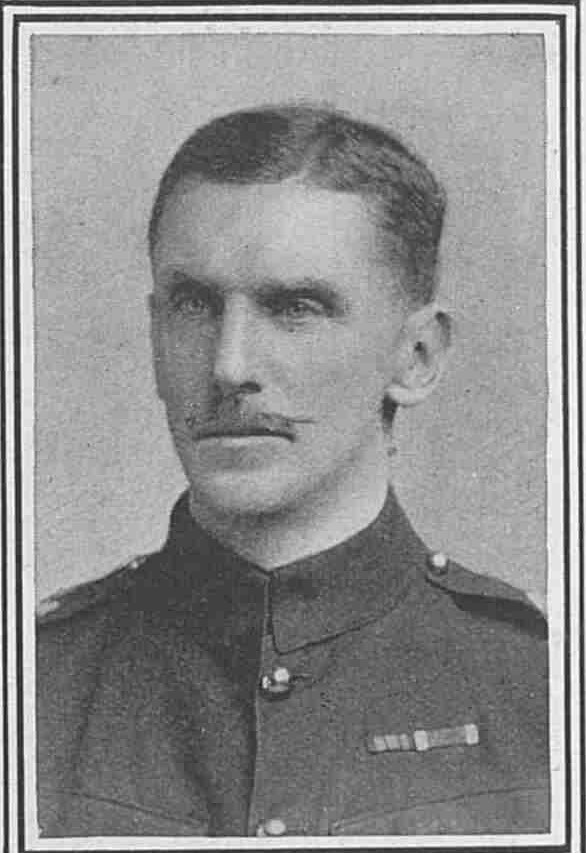For Valour.
Captain (Later Major General) Charles John Mellis (12 September 1862 – 6 June 1936) Indian Staff Corps was awarded his Victoria Cross for his actions on the 30th September 1900 in Ashanti.
His Citation reads:
Seeing that the enemy were very numerous and were going to make a firm stand he hastily collected all the men he could get and charged at their head into the dense bush. His action carried all along with him, but the enemy determined to have a hand-to-hand fight. One man fired at Captain Melliss, who put his sword through him and they rolled over together. Another shot him in the foot, the wound paralysing the limb. He behaved with great gallantry on three previous occasions.

Melliss was born in Mhow, British India, on 12 September 1862, the son of Lieutenant General George Julius Mellis of the Indian Staff Corps. He was educated at Wellington College, Berkshire and the Royal Military College, Sandhurst, being commissioned into the East Yorkshire Regiment in September 1882.
He transferred to the Indian Army in 1884. He served in East Africa 1895–96 and on the North-West Frontier of India 1897–98. This was followed by operations in the Kurram Valley in Tirah 1897–98. He served with the North Nigeria Regiment in West Africa 1898–1902, and in Ashanti during 1900, including at the relief of Kumassi.
Mellis married in 1901 Kathleen, youngest daughter of General J. M. Walker, and was promoted major 10 July. For the same action that won him the Victoria Cross, he was also awarded the brevet rank of lieutenant colonel on the following day. Mellis served in East Africa 1902–04, where he was badly mauled by a lion in 1903. He commanded the 53rd Sikhs (Frontier Force) 1906–10 and served on the North West Frontier operations (Zakka Khel) of 1908. He was promoted major general on 19 March 1912.
During the First World War he was attached to the 6th (Poona) Division of the British Indian Army as it moved into what was then the Ottoman province of Basra in 1914. In April 1915, he was instrumental in the British victory at Shaiba. Melliss also fought in the Battle of Ctesiphon, the furthest up the Tigris that the 6th Division would advance.
After Ctesiphon, General Townshend, commander of the 6th Division, ordered a retreat back down the Tigris. Ottoman forces pursued the division to Kut-al-Amara, where, on 7 December 1915, Townshend ordered it to dig in and await relief. Melliss fell ill during the siege; he was in hospital when Townsend surrendered on 29 April 1916.

Ottoman forces arrived at the outskirts of Kut al-Amara on December 7, 1915
Transported upriver to Baghdad by steamship, Melliss remained in hospital and unable to travel as the survivors of the 6th Division were marched north toward Anatolia. When Melliss was well enough to travel, he followed the same route north. As he was a general, Melliss was allowed a travelling party and better than average supplies. Along the way, they encountered dead and dying enlisted men who had fallen behind one of the columns of British and Indian prisoners. Melliss took any survivors he found with him; at each stop he insisted that the men he had rescued from the desert be put into hospital.
Melliss spent his captivity at Broussa in northwestern Anatolia. While there, he repeatedly wrote letters to Enver Pasha detailing the sad state of the enlisted prisoners and demanding better treatment. Most of the British other ranks (1,755 out of 2,592)[13] captured at Kut-al-Amara died in captivity.
He retired from the Indian Army 24 February 1920. He was appointed Colonel of his old regiment, the 53rd Sikhs, Frontier Force on 31 May 1921, a position he held until November 1934. He died on the 6th June 1936.
The Sphere 13th April 1901.
Wikipedia.
